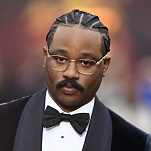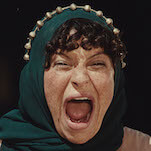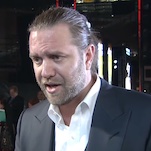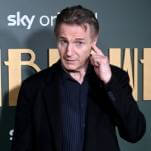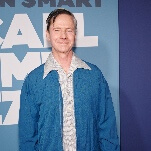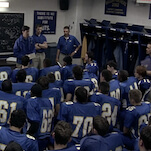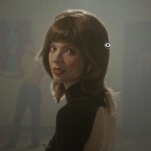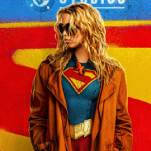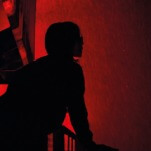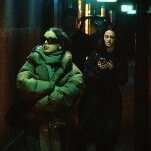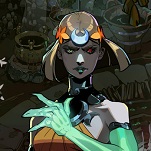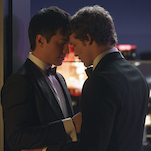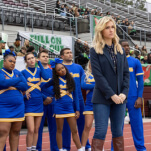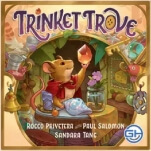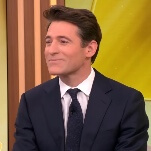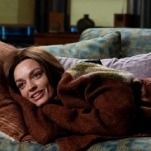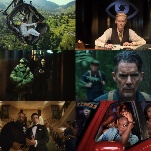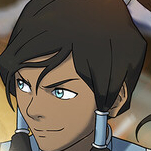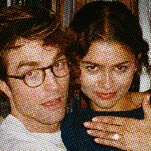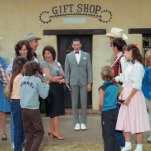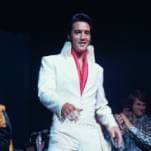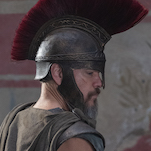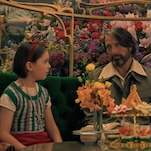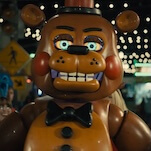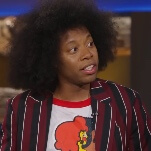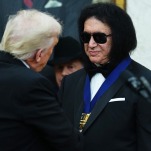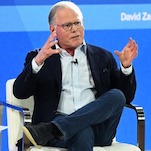The New Cult Canon: The Limey filmmaker commentary track
“People ask me, ‘Do you like this movie?’ And as a disinterested, objective filmgoer who had nothing to do with it, I’d say it’s a good movie. I’d recommend it to my friends. But as a screenwriter, I think it’s crippled.” —Screenwriter Lem Dobbs, commentary track for The Limey
The Criterion Collection introduced and developed the idea of a commentary track way back in the mid-’80s, when the emerging laserdisc technology allowed for multiple audio tracks to run concurrently on the same disc. Now, of course, they’re de rigueur: It’s rare to find a DVD that doesn’t have a commentary track among its special features, even for a movie that one might call “damned.” With virtually every studio imitating Criterion, the commentary track should be evolving over time to better meet consumer demand, but in fact, the opposite is true. Customers seem to demand special features, but they aren’t necessarily interested in watching them, and DVD producers have responded by loading down discs with goodies without refining the ideas behind them. In the process, the art of the commentary track has been lost.
The hallmark of Criterion commentaries—which remain the industry standard after all these years—is that they’re informative, engaging, and tightly edited, with minimal dead space between thoughts and observations. Ninety-five percent of other commentaries are content just to cram a bunch of filmmakers into a studio with a monitor and have them yak away for two hours without much of a game plan. This only works for filmmakers who happen to be good talkers—Paul Verhoeven, Joss Whedon, and Martin Scorsese immediately leap to mind—but the results are usually fatally dull; commentaries seem to be the one place where entertainers seem to have no interest in engaging their audience. Some filmmakers, like David Lynch or Woody Allen, simply refuse to do commentaries, because they’d rather let their movies speak for themselves. And that’s legitimate. What bothers me are the commentators who seem to be doing it out of obligation and bring nothing to the table—no amusing production anecdotes, and no attempt to dig into the film’s themes or the mysteries of the process.
Steven Soderbergh is an exception. He’s happy to talk about his work, he’s extremely articulate about it, and he’s embraced the commentary track from the beginning, not only with smart and occasionally innovative work on his own films—he interviews himself in the commentary on Criterion’s Schizopolis disc—but via guest appearances on other directors’ tracks, including with Mike Nichols on The Graduate and Catch-22, James Gray on The Yards, Neil LaBute on In The Company Of Men, and John Boorman on Point Blank. As he told me in our interview back in January, “the key is to never do them alone.” Soderbergh typically invites the screenwriter or a guest interviewer into the booth with him, leading to a back-and-forth that’s more Truffaut/Hitchcock than the typical free-for-all clusterfuck.
But even by his high standards, Soderbergh’s commentary with screenwriter Lem Dobbs on 1999’s The Limey is something special, a heated feature-length argument that couldn’t be further from the ego-stroking sycophancy of most tracks. It’s a case study in what happens to a script after it’s run through the sausage factory of production; even with a sympathetic director at the helm—Soderbergh championed Dobbs’ script for Kafka before making it his second feature, and the two remain friends—the writer will always get the shaft in the end. That’s why writers tend to be miserable cranks, and Dobbs is as cranky as they come; for his part, Soderbergh is magnanimous enough to take his licks and give a little back in return. Here’s Dobbs near the beginning of the commentary, setting the tone:
“I’ll say, in your defense and mine, that screenwriting is a hopeless profession. My God, if Robert Towne can complain about Chinatown to this day, what do you want? Didn’t I fax you that interview with [writer] Alain Robbe-Grillet complaining about Last Year At Marienbad? [Director] Alain Resnais just totally fucked it up, Delphine Seyrig was completely wrong, ruined the whole movie. So if the screenwriters of Last Year At Marienbad and Chinatown can complain about what directors did, then what do you expect?”
From that opening salvo, Dobbs and Soderbergh scrap pointedly about The Limey’s evolution from a violent B-movie written by a 19-year-old (“the stupid version,” Dobbs calls it) to a shooting script with richer backstories and character detail to the stripped-down, achronological, semi-experimental daylight noir that Soderbergh created. At bottom, Dobbs respects the choices that Soderbergh made, and the two have fun teasing each other over issues minor and major, but the discord is genuine, too. Dobbs snipes at critics (like “that motherfucker in Variety”) who failed to give him credit where it was due, challenges Soderbergh over the ruthless pruning of his script, and even laments scenes that were filmed exactly as written, but didn’t come out like he’d imagined. At a certain point, Soderbergh can only sigh and ask, “When are you going to direct?”
The main issue is Soderbergh’s decision to focus heavily on Terence Stamp as a British ex-con who flies to Los Angeles after learning of the dubious circumstances surrounding his estranged daughter’s death. There’s a sizable supporting cast around him: Peter Fonda as the slimy music-business hotshot likely responsible for the girl’s murder, Luis Guzmán as another ex-con who tips Stamp off and becomes his partner in revenge, Lesley Ann Warren as an aging actress and voice coach who knew Stamp’s daughter, and Barry Newman as Fonda’s shrewd security consultant. Soderbergh sketches them all vividly, but save for Stamp, they’re limited to just that—sketches. Fresh off his triumphant studio thriller Out Of Sight, Soderbergh pushed that film’s fractured style more aggressively this time out, emulating the feel of late-‘60s/early-‘70s classics like Point Blank, Petulia, The Long Goodbye, and Fonda’s trippy Western The Hired Hand.

